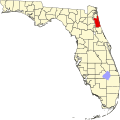2010 and 2020 census
As of the 2020 United States census, there were 32,143 people, 10,909 households, and 9,269 families residing in the CDP. [8]
As of the 2010 United States census, there were 29,362 people, 9,487 households, and 8,085 families residing in the CDP. [9]
2000 census
At the 2000 census there were 16,077 people, 5,294 households, and 4,600 families in the CDP. The population density was 900.2 inhabitants per square mile (347.6/km2). There were 5,549 housing units at an average density of 310.7 per square mile (120.0/km2). The racial makeup of the CDP was 94.76% White, 2.06% Black, 0.18% Native American, 1.61% Asian, 0.14% Pacific Islander, 0.44% from other races, and 0.81% from two or more races. Hispanic or Latino of any race were 2.38%. [2]
Of the 5,294 households 50.6% had children under the age of 18 living with them in 2000, 79.4% were married couples living together, 5.7% had a female householder with no husband present. 10.9% of households were one person and 5.0% were one person aged 65 or older. The average household size was 3.02 and the average family size was 3.26.
In 2000, the age distribution was 32.3% under the age of 18, 4.3% from 18 to 24, 31.8% from 25 to 44, 23.9% from 45 to 64, and 7.7% 65 or older. The median age was 37 years. For every 100 females, there were 100.4 males. For every 100 females age 18 and over, there were 94.5 males.
In 2000, the median household income was $82,159 and the median family income was $84,791. Males had a median income of $62,470 versus $35,775 for females. The per capita income for the CDP was $30,462. About 1.6% of families and 1.9% of the population were below the poverty line, including 2.0% of those under age 18 and 1.7% of those age 65 or over.



